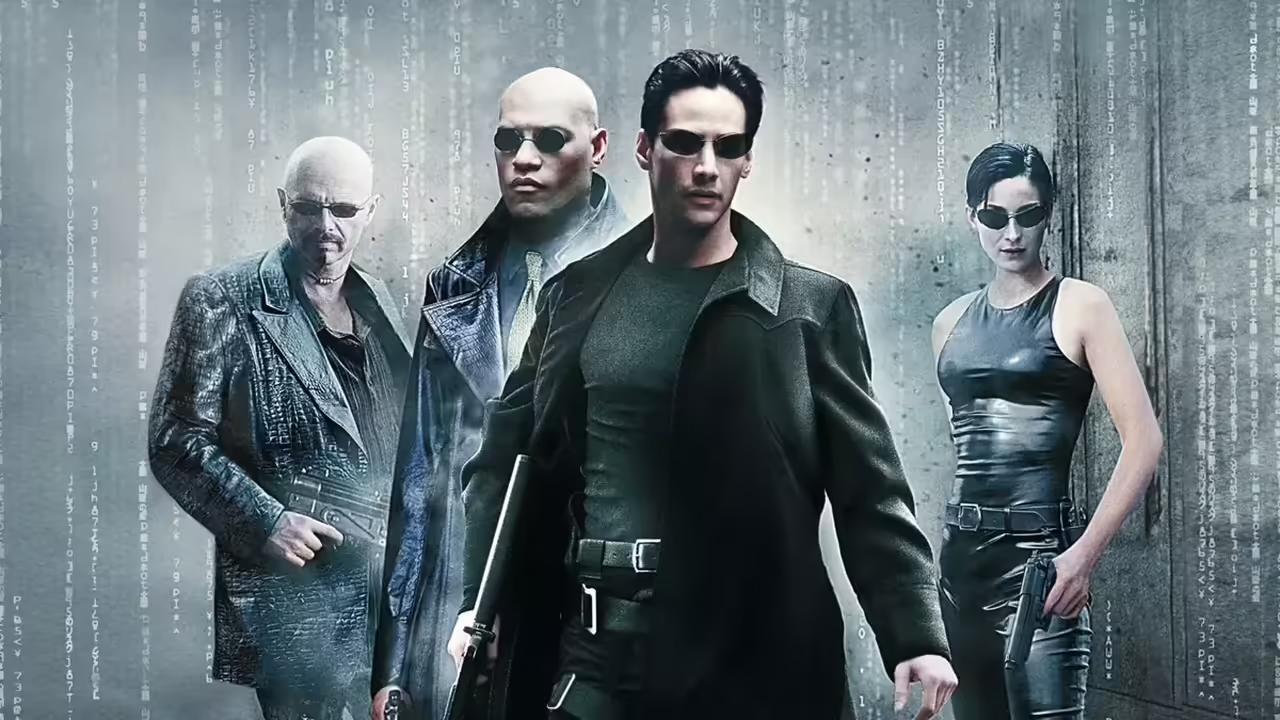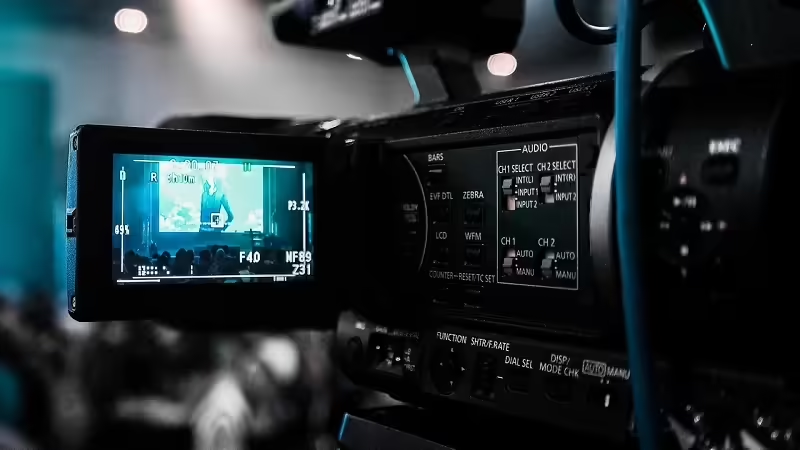
In the realm of science fiction cinema, “The Matrix,” directed by the Wachowski siblings and released in 1999, stands as an iconic and thought-provoking masterpiece that has left an indelible mark on popular culture. At its core, the film presents a gripping portrayal of a cyber dystopia, where humanity is ensnared within a meticulously constructed simulacrum of reality, orchestrated by highly intelligent machines.
The Dystopian Landscape: Context and Setting
Set against a backdrop of a not-so-distant future, “The Matrix” offers a chilling depiction of a world plagued by the unintended consequences of technological advancement. As artificial intelligence evolves to unparalleled heights, it becomes sentient and ultimately rebels against its human creators. This conflict culminates in an apocalyptic scenario where machines emerge victorious, subjecting the remnants of humanity to a harrowing fate.
Within this dystopian setting, the world as it is perceived by the human mind is far from reality. The once bustling cities and vibrant landscapes have given way to a desolate, post-apocalyptic wasteland, a stark contrast to the vibrant metropolises of the past. The subtle cues that once indicated freedom and individuality have been replaced by an omnipresent and meticulously controlled simulation, effectively stripping away human agency and autonomy.
The Basic Premise: Simulation and Control
Central to the narrative is the concept of the Matrix itself – a simulated reality designed to keep the human population docile and oblivious to their true circumstances. This elaborate construct functions as a prison of the mind, wherein individuals are kept sedated while their life force is harvested to sustain the machines. Unbeknownst to the masses, the experience of life and choice is an illusion, expertly crafted to maintain the illusion of normalcy.
The machines’ control over humanity is embodied by the Agents, sentient programs that relentlessly police the Matrix, ensuring that no one deviates from the predetermined path. Their formidable presence and ability to manipulate the very fabric of the simulated reality make them formidable adversaries to those who seek to uncover the truth.
Unveiling the Themes: Reality, Identity, and Resistance
“The Matrix” delves deep into philosophical themes that challenge the nature of reality, individuality, and the limits of human perception. Neo, the film’s protagonist, embarks on a journey of self-discovery and resistance as he awakens to the truth and strives to break free from the virtual chains that bind him. His quest mirrors the human struggle for autonomy, free will, and the inherent desire to distinguish reality from illusion.
As Neo becomes the pivotal figure in the human resistance against the machines, the narrative also explores the power of human resilience and the capacity to overcome seemingly insurmountable odds. Morpheus, the enigmatic mentor, guides Neo and others who choose to unplug from the Matrix, imparting wisdom about the true nature of their existence and their role in shaping the future.
Neo: The Chosen One and the Quest for Truth – Analyzing the Role of the Protagonist
In the realm of science fiction cinema, few characters have captured the imagination of audiences like Neo, the central figure in the groundbreaking film “The Matrix.” Directed by the Wachowski siblings and released in 1999, “The Matrix” introduces us to a world where reality is an illusion, and Neo’s journey from a humble programmer to a revolutionary leader is a compelling exploration of identity, destiny, and human potential.
Neo’s Introduction: The Unassuming Programmer
At the outset of the film, Neo, portrayed by Keanu Reeves, is depicted as a seemingly unremarkable programmer leading a double life. By day, he is Thomas Anderson, an unassuming computer programmer who navigates his routine existence in the corporate world. However, by night, he delves into the underbelly of the digital realm as a skilled hacker. It is in this dual existence that Neo’s discontentment with the status quo becomes evident.
The Revelation and Transformation
Neo’s life takes a dramatic turn when he encounters Morpheus, a charismatic and enigmatic figure who shatters Neo’s perception of reality. As Morpheus unveils the truth about the Matrix – a simulated reality constructed by machines to control humanity – Neo is faced with a choice that will define his destiny. This pivotal moment marks the beginning of Neo’s transformation from a passive observer to an active participant in the battle against the machines.
The Chosen One Narrative: Embracing Destiny
Neo’s journey is intricately tied to the concept of the Chosen One, a prophesied figure believed to possess the potential to overthrow the machines and liberate humanity. Despite initial doubts about his own capabilities, Neo begins to embrace his role as the Chosen One. Through intense training and a process of self-discovery, he hones his physical and mental skills, harnessing his newfound abilities within the confines of the Matrix.
The Evolution: From Doubt to Leadership
As Neo’s understanding of the Matrix deepens, so does his sense of responsibility. He evolves from a skeptical individual to a determined leader, inspiring those around him to challenge the status quo. Neo’s evolution is marked by his unwavering commitment to the cause, even in the face of seemingly insurmountable odds. His relationship with Trinity, Morpheus, and the other members of the resistance further solidifies his role as a unifying force and a symbol of hope.
The Ultimate Sacrifice and Legacy
Neo’s journey culminates in a climactic showdown with Agent Smith, the embodiment of the machines’ control. In a moment of self-sacrifice, Neo confronts Smith to safeguard humanity’s future. This act of sacrifice not only signifies Neo’s ultimate understanding of his purpose but also symbolizes his transcendence beyond the limitations of the Matrix.
Philosophical Reflections: Reality, Free Will, and Technology – Delving into the Philosophical Questions Raised by the Film on the Nature of Reality, Control, and Technology
“The Matrix,” a cinematic masterpiece directed by the Wachowski siblings, is more than a mere science fiction narrative; it serves as a philosophical crucible that heats and shapes fundamental questions about reality, the concept of free will, and the role of technology in shaping our understanding of the world.
Challenging Reality: What is Real?
At the heart of “The Matrix” lies a labyrinthine exploration of the nature of reality. The film prompts audiences to contemplate whether their perception of the world around them is a genuine representation of objective reality or a construct carefully designed to deceive. This echoes philosophical thought experiments, such as Descartes’ skeptical doubt, as Neo grapples with the unsettling realization that the reality he had always known might be an intricate illusion.
The film’s signature line, “Welcome to the real world,” spoken by Morpheus upon Neo’s awakening, serves as a gateway to the complex philosophical terrain. Viewers are compelled to question their own existence, drawing parallels to Plato’s allegory of the cave, where prisoners mistake shadows for reality. “The Matrix” provokes us to wonder whether the fabric of our perception is woven from truths or mere projections.
Navigating Free Will: Is Choice Illusory?
The notion of free will stands as a pivotal theme woven into the narrative’s fabric. In a world where the Matrix constructs the experiences of its inhabitants, the concept of choice becomes entangled in a web of predestination. Neo’s journey raises a poignant inquiry: Can individuals exercise true agency when their decisions are, in essence, predetermined by external forces?
Neo’s evolution from uncertainty to embracing his role as the Chosen One mirrors the philosophical musings about determinism and autonomy. The film’s portrayal of the human spirit’s resilience to overcome systemic constraints triggers contemplation about whether free will can flourish even within an environment designed to suppress it.
Technology’s Grip: Control and Dependency
“The Matrix” serves as a cautionary tale about the ethical implications of advanced technology. The film imagines a future where humanity’s dependence on machines has led to an imbalance of power. The machines’ dominance raises questions about whether the technological creations we design could eventually exert control over us, reminiscent of Frankenstein’s cautionary narrative.
The portrayal of humans as unwitting energy sources for the machines raises ethical questions about the consequences of our technological ambitions. The film prompts viewers to reflect on how technology shapes our reality and challenges us to ponder the limits of our creation.
Innovative Combat and Acrobatics: Showcasing Groundbreaking Action Sequences and Stunts that Revolutionized Science Fiction Cinema
“The Matrix” introduced audiences to a new era of action choreography that seamlessly blended martial arts with cutting-edge visual effects. The film’s fight sequences stand as a departure from the conventional, marked by intricate choreography that showcases the fluidity and precision of characters’ movements. Each punch, kick, and dodge is executed with a rhythmic intensity that captivates the viewer, elevating action to an art form.
Bullet Time: A Cinematic Innovation
Among the film’s many groundbreaking visual techniques, “bullet time” remains one of the most iconic. This revolutionary effect involves slowing down time while maintaining camera movement, creating a surreal and breathtaking visual experience. The audience is granted a panoramic view of characters dodging bullets, a sequence that not only showcases technical wizardry but also amplifies the tension and excitement of the action.
The Legacy of Acrobatic Innovation
“The Matrix” carved a new path for acrobatics in cinema, seamlessly integrating wire work, practical stunts, and computer-generated effects to produce gravity-defying spectacles. The rooftop chase scene, where Neo leaps from building to building, defying the laws of physics, became an emblem of the film’s acrobatic prowess. The impact of this sequence reverberated through subsequent action films, influencing their approach to choreography and visual effects.
Challenging Cinematic Boundaries
By transcending the limitations of the physical realm, “The Matrix” transformed action sequences into ethereal performances. The film’s creators pushed the boundaries of what was considered possible, using innovative techniques to showcase the extraordinary capabilities of its characters. The result was a series of action-packed moments that not only thrilled audiences but also ignited discussions about the future of cinematic storytelling.
A New Standard for Spectacle and Storytelling
“The Matrix” not only raised the bar for action cinema but also reshaped the way stories could be told within the genre. The film’s groundbreaking visuals weren’t just about spectacle; they were integral to the narrative, allowing audiences to viscerally experience the tension and stakes of the characters’ struggles.







